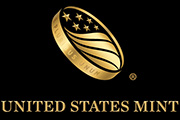Hawaii
Forms Matter!
Overview
Starting with the Hawai’i Volcanoes National Park quarter, the students will visit the park’s website to learn about volcanoes. The class will discuss the parts of a volcanic explosion, read a text, and discuss the three forms of matter (solid, liquid, and gas). The students will view a volcano video and identify the three forms of matter found in the eruption. Using the “Form Matters!” worksheets, the students will create a volcano and label the forms of matter. The class will make gelatin, identifying the forms of matter involved.
Worksheets
Hawai’i Volcanoes National Park Quarter Reverse
United States Map
Form Matters! Pictures
Form Matters! Words
Download/View
The file below contains the lesson plan and all the associated worksheets. When you click on the link, the PDF will open if you have the free Acrobat Reader plug-in installed. Depending on your browser's settings, the lesson plan will open in this tab, in a new tab, or in a new window.
You can then click "File" in the top menu and "Save As" to save the PDF to your hard drive or click "File" and then "Print" to print all the pages on your printer.
National Standards
Science
National Science Teachers Association (www.nsta.org)
- Properties of objects and materials: Materials can exist in different states—solid, liquid, and gas. Some common materials, such as water, can be changed from one state to another by heating or cooling.
Language Arts
National Council of Teachers of English (www.ncte.org) and International Reading Association (www.reading.org)
- Students employ a wide range of strategies as they write and use different writing process elements appropriately to communicate with different audiences for a variety of purposes.
- Students apply knowledge of language structure, language conventions (e.g., spelling and punctuation), media techniques, figurative language, and genre to create, critique, and discuss print and non-print texts.
- Students adjust their use of spoken, written, and visual language (e.g., conventions, style, vocabulary) to communicate effectively with a variety of audiences and for different purposes.



